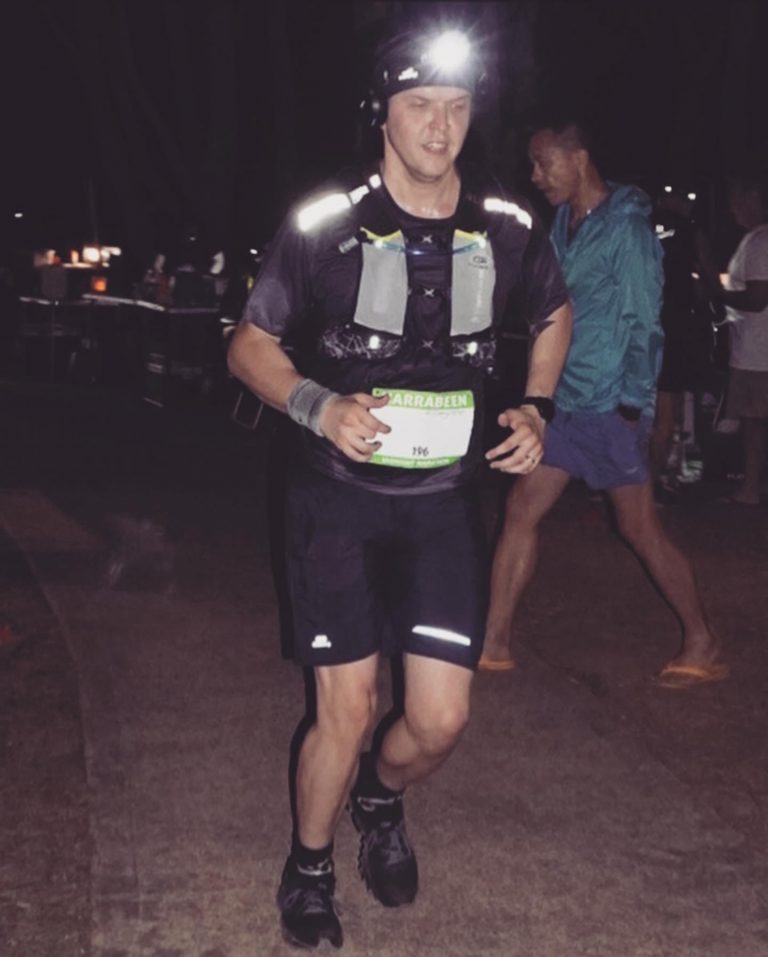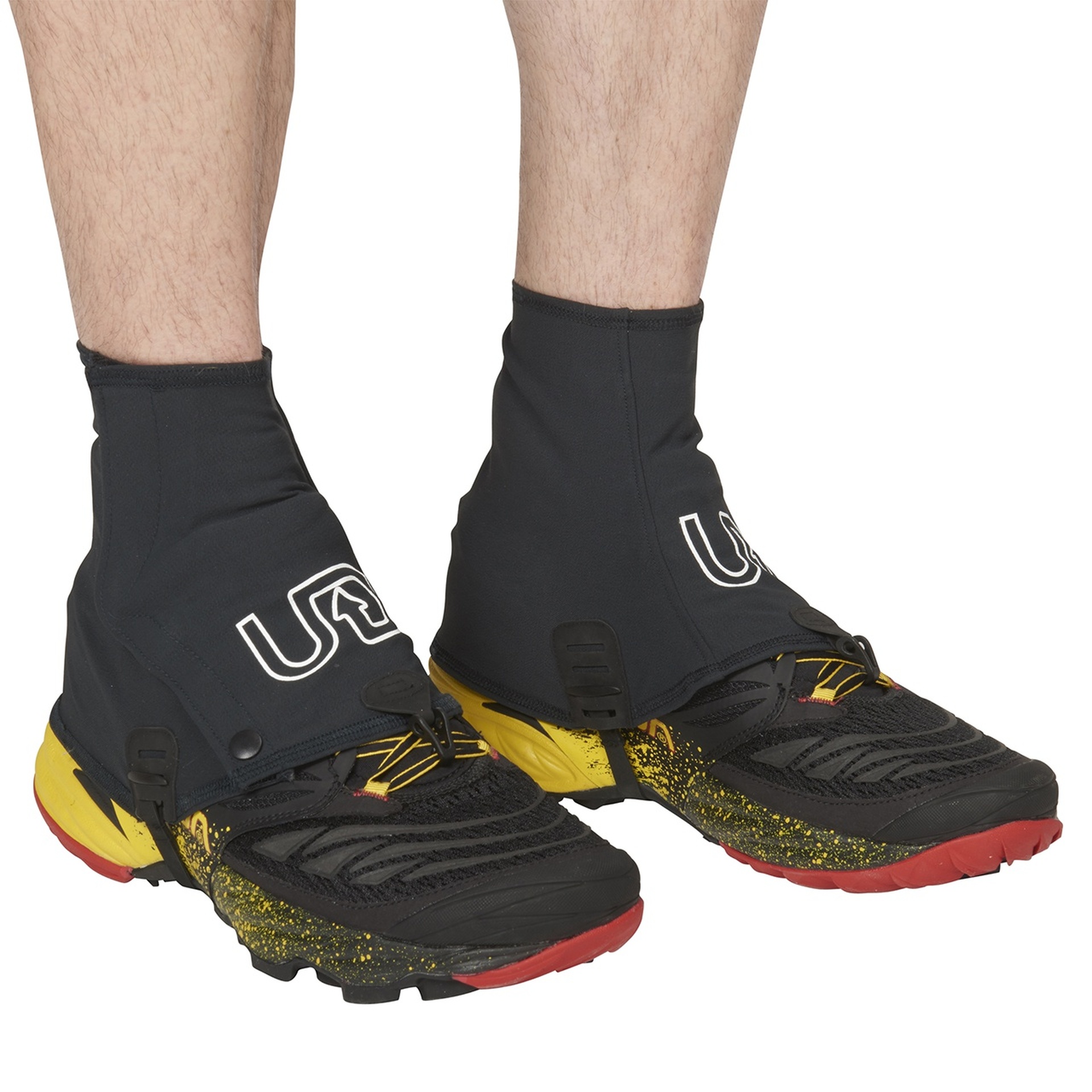Trail running gaiters are basically a piece of fabric that covers the opening of your running shoe to prevent anything from coming in. When you run on a trail there are always going to be little pieces of rocks, sticks and to your likely dismay, bugs that will go into your shoe.
The last thing that you want to do is take your shoe off whilst you’re holding a race pace just so you can clean out your shoe. In comes the trail gaiters. If you want to avoid getting blisters, cuts, and just general feelings of discomfort then you need to consider trail shoe gaiters.
We’ve reviewed some of the best trail running gaiters out there on the market today and have come up with the below list. A guide further below explains how they work.
Best Trail Running Gaiters Compared and Reviewed
1. Salomon Trail Running Gaiters – Low
Reasons to buy
- Fits most common trail running shoes
- Flexible due to velcro material
- Durable with high-quality nylon
Reasons to avoid
- Not the best option for water crossing trails
This Salomon nylon-based, hook and loop closure-based trail gaiters are perfect for any terrain. You can use these trail shoe gaiters in gravelly, snowy, thorny, grassy, or basically any other surface you can think of. They’re highly durable and offer the quality that we’ve come to expect from Salomon.
This model, however, is designed for low-cut shoes that aren’t too bulky due to the velcro strap that could cause limitations if you have a lot going on with your shoe as you’d expect from the velcro material. It’s perfect for shoes that don’t have too many bells and whistles.
Basically, this means any pair of trail shoes, but it might not be the best for mountaineering or hiking shoes due to this fact.
If we had to pick one fault with them, it’s that they aren’t the best for river crosses. As you know, many trails in ultramarathons or even smaller events will have a river cross. These aren’t exactly waterproof but if your race doesn’t have a river cross then we would definitely opt for them.
Your socks will definitely be protected with some light rain however if your trail has a lot of water crossing then they may not be the best option for you.
2. Salomon Trail Running Gaiters – High
Reasons to buy
- Fits most common trail running shoes
- Flexible due to velcro material
- Durable with high-quality nylon
Reasons to avoid
- Again, not the best for water or river crosses
It’s no surprise that we’re a fan of Salomon’s for them to reach number two on our list as well. Well the reasoning is very simple, Salomon is one of the most reputable companies building products for runners. The Salomon high trail running gaiters are no exception to their impressive product range.
These are also single-piece, nylon-based shoe gaiters that will prevent debris from entering your shoes. The textile rubber strap at the bottom of the shoe is super-durable for when you step on sharp rocks which are often seen in trails.
You might be asking at this point, what’s the difference between the low and the high? All the features sound exactly the same so far. Well, in a nutshell, you’re correct. The key difference is that the low gaiter sits a little lower on the leg, whilst the high sits higher.
Without getting too deep into it, check out the below video from Salomon which demonstrates both products.
At the end of the day, the preference is if you like your gaiters to sit a little lower, or a little higher on your leg. If you’re wondering which ones are more popular than we’ve come to believe it’s the first product we reviewed, the low gaiters from Salomon.
However, if your preference is for the gaiter to sit a little higher then definitely opt for the high. The features otherwise are the same.
3. Ultimate Direction FK Gaiters
Reasons to buy
- Replaceable straps
- Can wear with any length socks
- Extra plastic snap to prevent accidental openings
Reasons to avoid
- More on the pricey side
- Can be difficult to affix the velcro strap
These trail running gaiters are made from synthetic materials which make them ultra-strong, but stretchy. What’s good about these trail gaiters is that the straps are replaceable which you won’t see with many trail gaiters, even the Salomons above.
The FK gaiters from Ultimate Direction also have a velcro strap, but what makes them extra unique is that they also have a plastic snap to keep the velcro from accidental openings.
These gaiters are advertised by the manufacturer as “Designed by Trail Runners, For Trail Runners” so it’s comforting to know that the people that have made it, have actually put it through trial and testing.
For us, the biggest benefit of these trail gaiters is the fact that the straps are replaceable, and only cost two dollars retail to replace. For someone that loves trails and is slowly getting into doing ultra distances, this is a huge plus. Whilst running takes little-to-no investment to get started, once you start getting into ultramarathons you really start to feel the wallet taking a hit!
Ultimate Direction has been doing very well lately and has an amazing hydration vest as well which has been popular for many ultramarathoners, so they know what they’re doing.
4. Altra Trail Gaiters
Reasons to buy
- Able to change your shoes or socks without removing the gaiters
- Highly breathable
- Durable
Reasons to avoid
- Mainly designed for the Altra Trail shoes
These gaiters come with a highly breathable stretch material that has a strapless design that you pull on. Whilst they work with most trail shoes, they’re best used with the Altra Trail Shoes that have the Altra GaiterTrap. Because of this, these trail shoe gaiters don’t have an instep strap but rather more so a hook-and-loop type patch.
One benefit of this which we really like is the fact that you can change your shoes or your socks without having to remove the gaiter. If you carry an extra pair of socks for when you complete the river cross at an ultra trail for example, then this would make it a lot easier for you to change your socks without having to unclip a strap.
Altra Trail has been around since 2009 and its headquarters are in the United States. Whilst they haven’t been around for as long as some reputable companies such as Salomon which has been around since 1947, they are definitely proving to be a competing player in the field.
If you are using Altra shoes then we highly recommend that you complement an already amazing shoe with these gaiters.
5. Kahtoola INSTAgaiter – Low
Reasons to buy
- Extremely lightweight
- Very compact and easy to store
Reasons to avoid
- Zipper seems to cause problems for a lot of users
These stretch-woven nylon gaiters with a very catchy name (If that impresses you) have an adjustable strap that is made from durable thermoplastic polyurethane (TPU). It contains a rounded design which basically helps you fit different sizes of footwear.
These gaiters have a great feature going for them – they’re very compact and very lightweight. If you’re a runner that walks around with not much other than a small bladder then you understand that space is everything. The fact that you can fold these and easily put them away when you’re done with them is why they’ve made it on the list.
The only thing that sets them off from the rest is the zipper, it is not very durable and as such you might not get as much lifespan as you want from these gaiters as you would wish. However, if the terrains that you’re running on aren’t very demanding then these could be a great option.
How To Choose The Best Trail Running Gaiters
All gaiters have but one purpose, to keep small objects such as dirt, rocks, and sticks out of your shoes. There are many different gaiters to choose from such as hiking, mountaineering, and trail running gaiters. For the purpose of this article, We’re only going to cover trail running and what key nuances to look out for there.
Gaiter Height
The first thing you should look out for when buying trail running gaiters is height. For running on trails, you are often best advised to use over-the-ankle gaiters. Over-the-ankle gaiters are designed to fulfill the main purpose of keeping pebbles and other objects out whilst maintaining the freedom to run and being lightweight.
If you accidentally purchased a hiking gaiter you would notice that there is less airflow coming in them as well, as these are usually designed for conditions such as the snow. So you want to ensure that you’re looking for over-the-ankle gaiters when trail running is the goal.
Gaiter Sizing
Gaiters will usually come with two different options for runners, the hook and loop patch which connects to the heel of your shoe. What you need to make sure with these types of gaiters is that your shoe has a hook and loop patch on them. If you’re unsure, ask the experts at your local running shop.
Others will have an instep strap such as hiking gaiters. When you put your gaiters on make sure that they’re a comfortable fit.
Try to do a run trial with them (Most professional running shops will let you do this). Play around with bodyweight exercises such as squats or calve extensions to make sure you’re not feeling any unwanted chafing.
Trail Running Gaiter Features
- Waterproofing: If the trails that you’re running on have a river cross or a water cross then be sure to look out that your trail gaiters are waterproof. Most gaiters will prevent your socks from getting wet from a bit of rain but crossing water is a whole different topic.
- Entry System: We discussed this above, most gaiters will either the hook and loop patch or the instep strap. If your shoes don’t have a gaiter hook and loop patch on them then your option of choice should be the instep strap gaiters.
- Closures: Check how the gaiters are being closed off, most of them will be based on elasticity and then you’ll further tighten them with velcro. Ensure the height is not too high if you’re wearing lower cut socks as some gaiters will cause chafing if not professionally designed when this is the case.
Instep Straps: These secure the lower end of your gaiters with the bottom of your shoe using a belt. The material used here is important, if there is something like cotton there then it won’t last one trail run however if the material is stronger, such as leather then you’re going to get more durability out of them. - Hook and Loop Patch: These hook up to the bottom of your shoe, which are different from the instep straps. You need to make sure your shoe has the ability to hook up to gaiters for you to make use of these. You can ask your local running shop experts if you’re not sure.
- Lace hooks: Some gaiters have the extra functionality of lace hooks which allows you to hook up your gaiters to your laces, for extra security.
A core feature of every good trail running shoe gaiter is the adjustable velcro strap and elasticity. These have been proven through reviews of many users to provide the most comfort. The reason for this is that by adjusting the velcro and having a stretch-type material for the gaiters you’re essentially molding them to the shape of your foot.
This is the best way to prevent chafing. Using gaiters that have a zipper, for example, may not offer the same comfort due to this reason.
Frequently Asked Questions
Yes, definitely. Most gaiters perform perfectly when it rains and the only time you need to look out for waterproofing with gaiters is if you’re doing a river cross on a trail run.
Generally, if you soak them in warm water with a bit of soap and let them sit for a bit they will be fine. Be sure to rinse them thoroughly with water afterward and hang them out to dry. This ultimately depends on the material however so always make sure to read the manufacturer’s guidelines.
For most trail runs you can, however, there are differences when you go hiking or you’re in deep slow. Usually, in this case, trail gaiters won’t be enough and you’ll need to invest in mountaineering or hiking gaiters.
Conclusion
Picking the right trail gaiters doesn’t need to be hard, the main thing you should consider is the purpose and what kind of system and closure you want and whether you prefer short or long gaiters.

Marko Rakic is a trail runner and fitness enthusiast from Sydney, Australia. He is the lead writer for The Ultimate Primate and believes the best way to live a happy life is through constantly challenging yourself.









